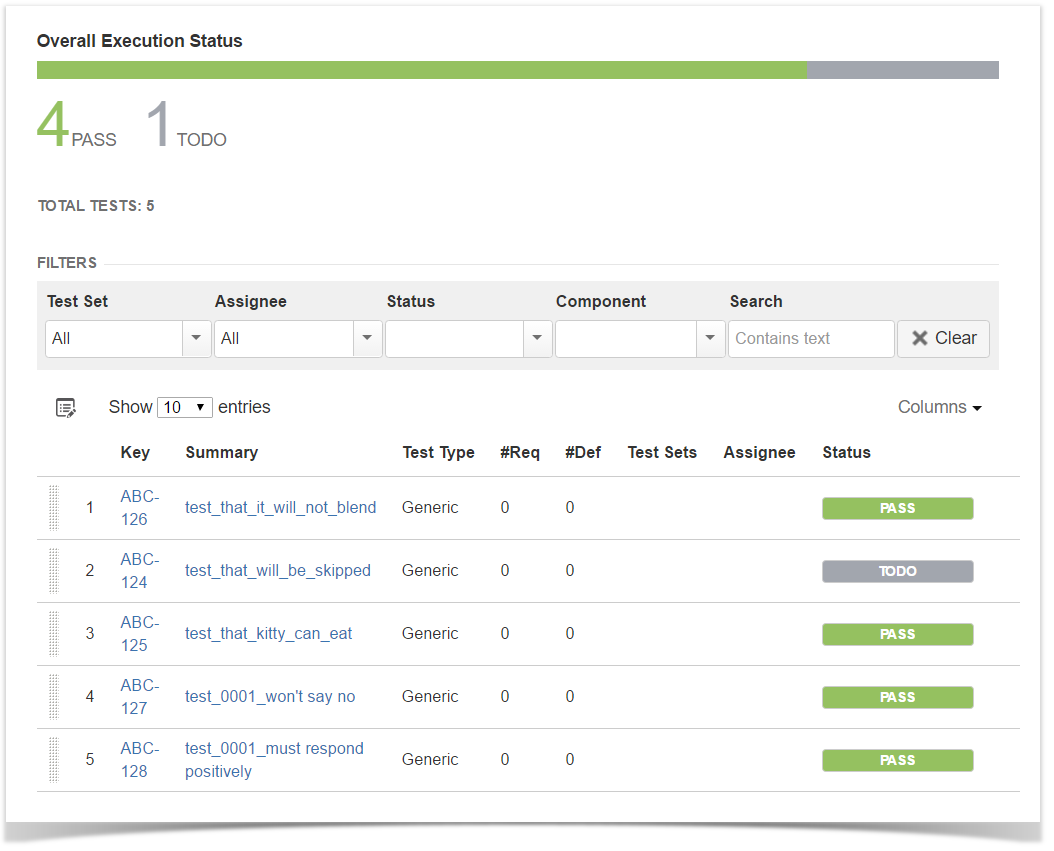Overview
In this tutorial, we will create some tests in Ruby, using Minitest and the "minitest-reporters" gem.
The "minitest-junit" could also be used, with minor changes on the code bellow, namelly in the "test_helper.rb".
Requirements
- Install minitest and minitest-reporters gem (or the "minitest-junit" gem as an alternative)
gem install minitest minitest-reporters
Description
The code that follows is mostly from the minitest github project.
Let's start by using a sample Ruby class.
class Meme
def i_can_has_cheezburger?
"OHAI!"
end
def will_it_blend?
"YES!"
end
end
The tests will require some common code that can be written in a "test_helper" ruby script.
$LOAD_PATH.unshift File.expand_path('../lib', __FILE__)
require 'meme'
require 'minitest/autorun'
require "minitest/reporters"
Minitest::Reporters.use! Minitest::Reporters::JUnitReporter.new
Writing some unit tests is straightforward.
require 'test_helper'
class MemeTest < Minitest::Test
def setup
@meme = Meme.new
end
def test_that_kitty_can_eat
assert_equal "OHAI!", @meme.i_can_has_cheezburger?
end
def test_that_it_will_not_blend
refute_match /^no/i, @meme.will_it_blend?
end
def test_that_will_be_skipped
skip "test this later"
end
end
Minitest also supports Rspec like features, such as the ability to use "specs". In this case, the test is wrapped inside one or multiple "describe" blocks, and is consubstantiated in an "it" block.
require 'test_helper'
describe Meme do
before do
@meme = Meme.new
end
describe "when asked about cheeseburgers" do
it "must respond positively" do
@meme.i_can_has_cheezburger?.must_equal "OHAI!"
end
end
describe "when asked about blending possibilities" do
it "won't say no" do
@meme.will_it_blend?.wont_match /^no/i
end
end
end
The two different approaches are valid to write tests and importinging them and their results should be similar.
After running the tests (see bellow) and generating the JUnit XML report(s), it/they can be imported to Xray (either by the REST API or through "Import Execution Results" action within the Test Execution).
rake test
Several JUnit XML will be produced in fact:
The first one (TEST-MemeTest.xml) contains the results of the unit tests. The other two files contain results related with the "spec" test.
Note: this example could be further optimized in order to obtain just a JUnit XML file containing the results for the two different test classes
The test is mapped to a Generic Test in JIRA, and the "Generic Test Definition" field contains the name of ruby test class concatenated with the name of the method that implements the test case.
The Execution Details of the Generic Test contains information about the Test Suite, which in the case of the unit tests corresponds to the name of the class.
In the case of the spec related tests, they're mapped in a slight different way: the multiple "describe" are concatenated using "::", along with the name of the "it" block preceeded by "test_<counter>".
References
- https://github.com/seattlerb/minitest
- https://github.com/kern/minitest-reporters
- https://github.com/aespinosa/minitest-junit
- https://github.com/Devskiller/devskiller-sample-ruby-calculator



